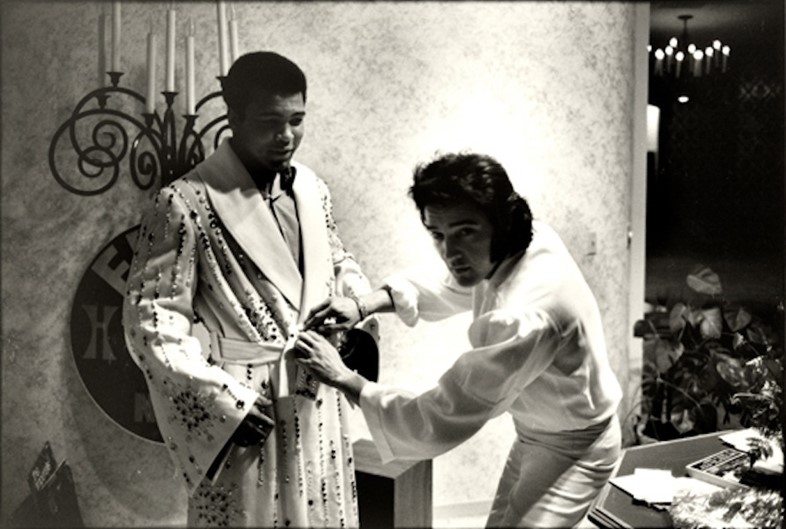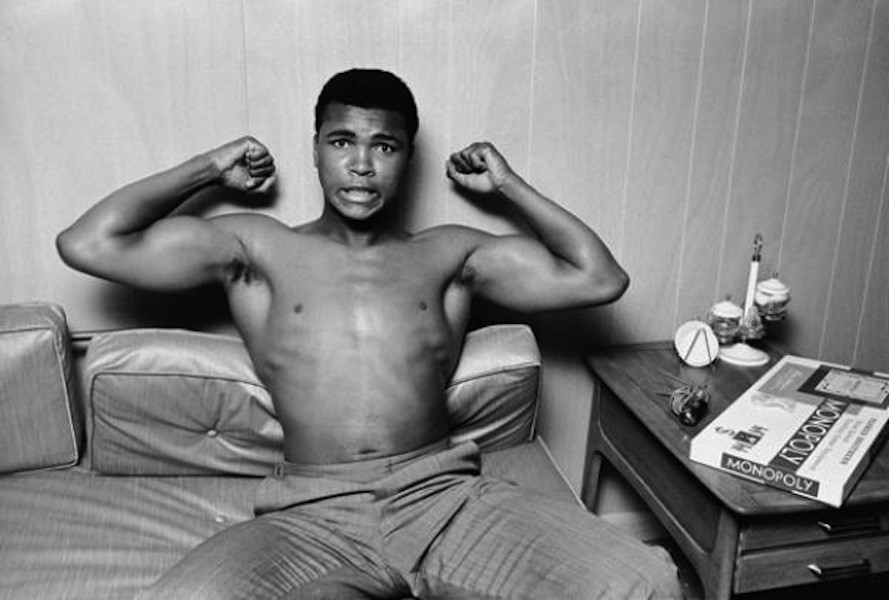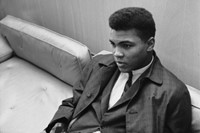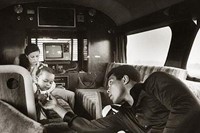"Float like a butterfly, sting like a bee" – we look back at the lifetime achievements and personal style of the boxing hero
In 1996 Muhammad Ali, three-time world heavyweight boxing champion, lit the Olympic torch in Atlanta, moving a nation as he defied Parkinson’s disease to hold the flame. Last night saw Ali again, dressed in a white suit and tie, as one of a few sporting dignitaries opening the Olympic Games 2012. A fighter all his life, he has fought against his ailment, in a series of poignant moments that will be remembered as some of the most inspiring in Olympic history.
It was announced in June of this year that Ali was the new face of Louis Vuitton’s Core Values Range. The campaign, photographed by Annie Leibovitz, features Ali at his home in Arizona with his Grandson.

Born Cassius Clay, Ali changed his name after joining the Nation of Islam in 1964. He started boxing as a teenager, becoming an Olympic medalist in 1960. His silk boxing robes have become as iconic as his matches, such as the red robe he wore in 1963 to controversially defeat Henry Cooper, which had 'Cassius Clay, The Greatest’ embroidered on the back.
"Ali had a white warm up robe and would later wear one inscribed with his famous motto – ‘float like a butterfly, sting like a bee’"
Ali wore Everlast red gloves and boxing trunks in black and white. He had a white warm up robe and would later wear one inscribed with his famous motto – ‘float like a butterfly, sting like a bee’ (titled after his balletic presence in the ring). One of his early robes carried the words ‘The Lip’ on the back.
Ali has always caused controversy. In 1966 he was stripped of his heavyweight championship and boxing licence after he refused to participate in the Vietnam war, declaring "I ain't got no quarrel with them Viet Cong… They never called me nigger." His licence was reallocated in 1971 in time for him to regain the championship title in 1974, wearing a two-tone calf-length robe: white satin decorated with African patterns and spelling out his name on the back in black beads. This sold at auction in 1997 for $140,000, while his white satin trunks sold for $50,000.

In February 1974, Elvis presented Muhammad Ali with a robe emblazoned “The People’s Choice” in Las Vegas, which a sports commentator would later call Ali’s “pride and joy.”
Despite his volatile and outspoken nature, Ali has become an American hero and national treasure. Known now for his sharp suits more than his boxing robes, his legacy lives on in boxing and social activism. He embodies the idea of pushing oneself beyond sport.



